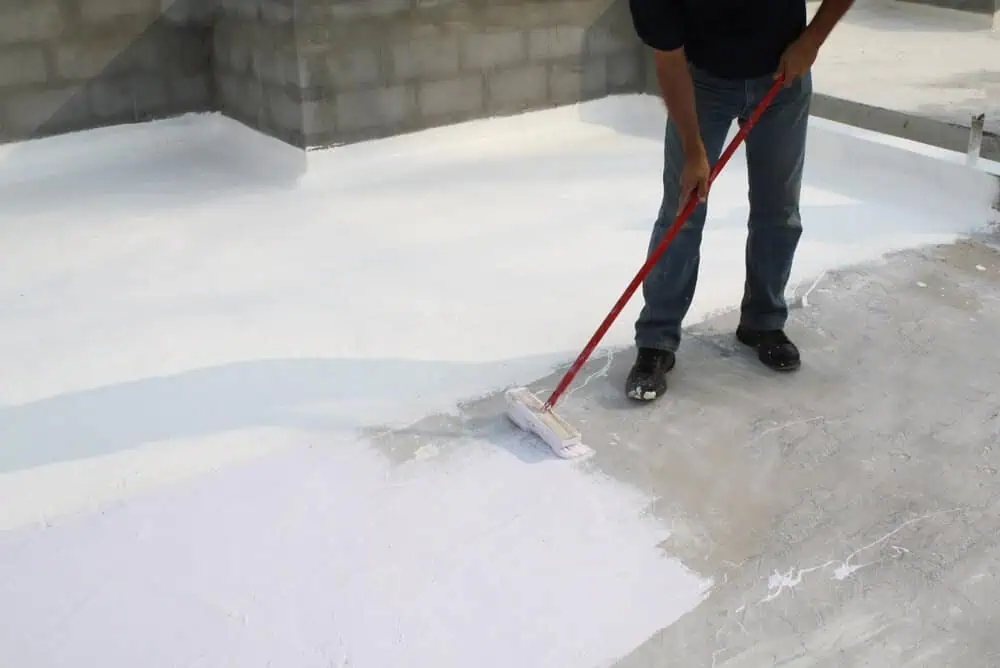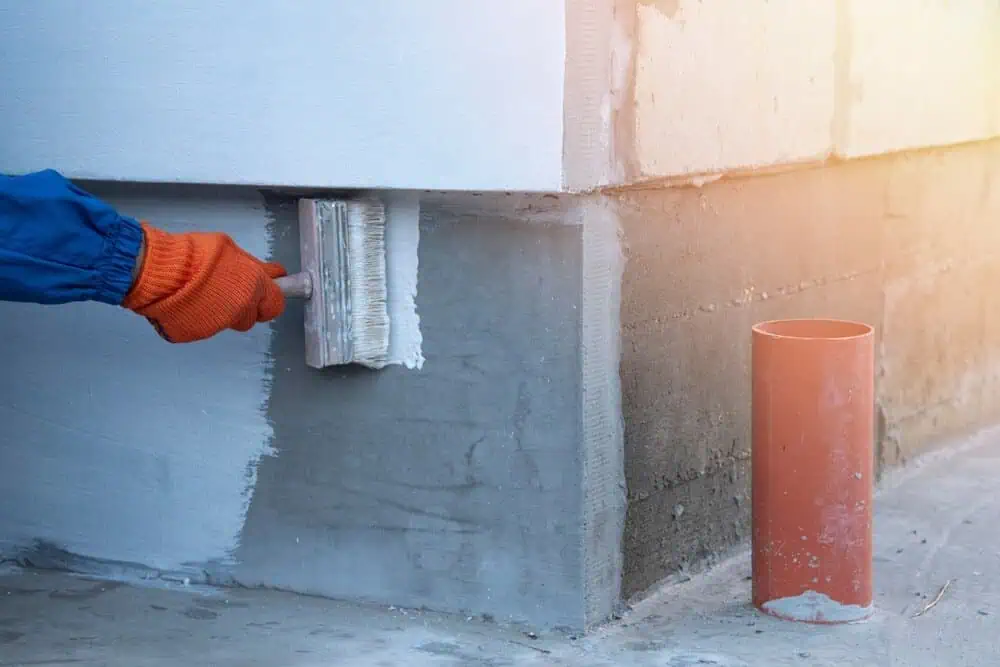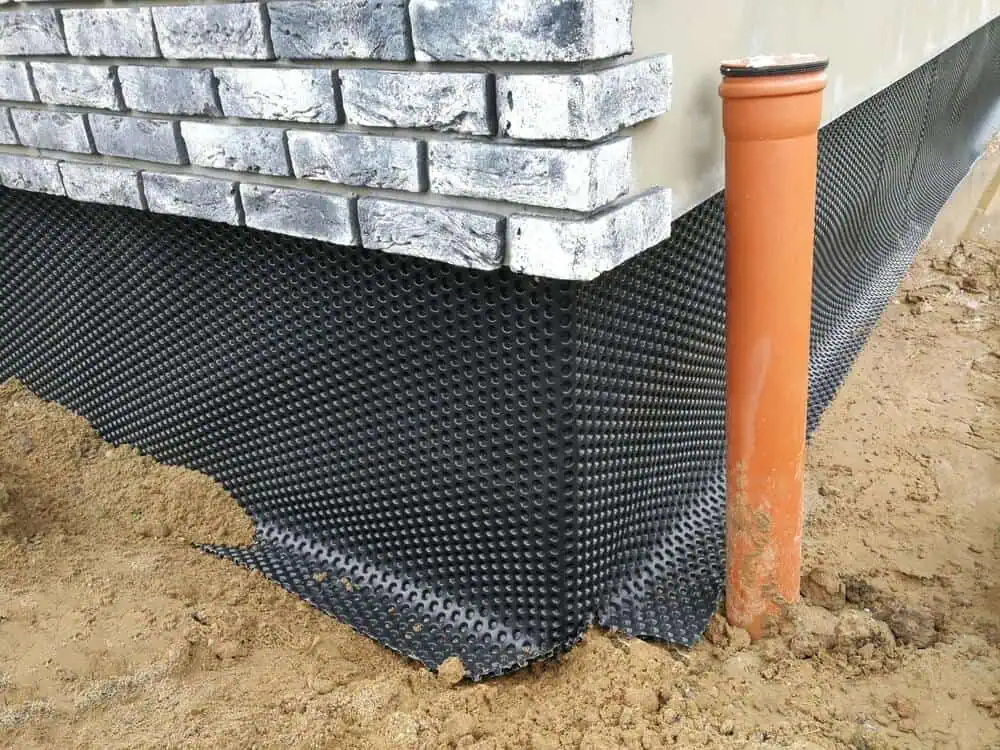While we often think of water as a source of life, when it comes to commercial buildings, nothing could be more false. Water penetrating a commercial building can cause air quality issues, structural weakening, and other issues that must be avoided. Commercial building waterproofing can prevent water infiltration and then impending mold growth and structural problems that accompany water damage. This guide explores the systems, methods, and applications involved in commercial waterproofing, highlighting its importance in safeguarding commercial buildings.
Why Commercial Waterproofing Is Essential
Commercial waterproofing isn’t just a roofing solution. It protects the entire building envelope and foundation walls from water intrusion and water seeping into interior walls. Without effective waterproofing solutions, commercial properties face risks like:
- Structural weakening due to prolonged exposure to water causing cracking, spalling, or the deterioration of embedded reinforcement.
- Mold growth that can compromise indoor air quality, which can cause breathing discomfort, irritation, and other health concerns.
- Costly repairs from extensive damage caused by inadequate waterproofing, reducing the property owner’s profit margins and potentially displacing operations.
- Frequent maintenance requirements that drive up operational expenses and require constant attention.
Implementing a robust waterproofing system ensures long-term protection and energy efficiency for commercial properties.
Types of Commercial Waterproofing Systems
Understanding the available commercial waterproofing systems is crucial for selecting the best solution for a specific project. Below are some of the most widely used systems:
1. Cementitious Waterproofing
This system uses cement-based waterproofing materials that are easy to apply. They’re suitable for areas exposed to high moisture levels, such as swimming pools and foundation walls. Cementitious waterproofing is highly effective for below-grade applications, and they’re most commonly applied to masonry surfaces.
2. Liquid Applied Membranes
Liquid waterproofing involves applying fluid membranes that create a seamless, durable waterproof barrier. These membranes provide flexibility if the building shifts or settles, and they can adapt to environmental conditions and temperature fluctuations. They’re effective for vertical and horizontal surfaces and can be applied to almost any material.
3. Sheet Membranes
Pre-formed waterproofing membranes are applied to exterior surfaces to prevent water ingress. These membranes are often UV-resistant and provide excellent protection against hydrostatic pressure. They’re suitable for above- and below-grade applications and can be used in conjunction with other methods.
4. Below Grade Waterproofing Systems
Below-grade waterproofing systems protect foundations and other below-ground structures from water penetration. These systems include applied membranes and drainage systems to redirect water away from the building.
Common Waterproofing Methods
There are plenty of ways to waterproof a commercial building. The following are some of the most common methods used to apply waterproofing systems, depending on the building’s design and environmental conditions:
- Surface Coatings: Applied directly to the building’s exterior to form a protective layer. This is an excellent way to waterproof older buildings, even if water penetration was an issue in the past.
- Drainage Systems: Installed to prevent water accumulation and manage hydrostatic pressure. This requires digging around the building and installing membranes, drainage pipes, stone, and other materials below grade.
- Injection Grouting: Used to fill cracks and prevent water ingress in existing structures. These are one-off solutions to smaller water infiltration issues but won’t solve larger problems.
- Sealants: Applied to joints and seams to prevent water intrusion—a standard practice for membrane installation.
Each method offers unique advantages, making it essential to choose the right approach based on the commercial waterproofing needs of the property.
Key Applications of Waterproofing Systems
Waterproofing systems play a vital role in various components of commercial buildings. Some areas are more important than others, though, so it’s important to attack the areas most prone to water infiltration.
Foundation Walls
Foundation walls are subject to several types of water infiltration. Hydrostatic pressure from ground water can force moisture into the walls. Buildings with eaves and faulty gutter systems can soak the ground around the foundation, splashing up and causing damage, as well.
Preventing this kind of damage requires below-grade waterproofing such as liquid membrane or sheet membrane products applied to the exposed foundation or drainage systems installed around the foundation.
Roofing Systems
Roofing systems are the most exposed to water issues. Flat roofs common on commercial buildings literally collect water, and if the membranes aren’t intact, water can soak in under the coating. Proper roofing systems are required to prevent infiltration, along with drainage systems like scuppers and downspouts.
Exterior Surfaces
Exterior surfaces require a degree of waterproofing, as well. Keeping the exterior of the building in good condition can prevent wear and tear caused by UV rays and environmental conditions, allowing materials to resist water infiltration as they’re designed.
Interior Walls
In some cases, interior walls can be waterproofed, as well. This may be to keep water out of the building, but it might also be to prevent wash water or moisture from high-humidity activities inside the building from penetrating the building envelope. Membranes and sheets are helpful with meeting these needs.
Benefits of Proper Waterproofing
Waterproofing might seem like an expensive investment, but it’s often worth it. Investing in proper waterproofing solutions offers several benefits for commercial property managers and owners, including long-term protection, cost savings, enhanced indoor air quality, and improved energy efficiency. By addressing potential water issues early, property managers and owners can prevent costly repairs, preserve the integrity of their structures, and ensure a healthier, more sustainable environment for both tenants and employees.
Long-Term Protection
Commercial waterproofing systems provide durable solutions that reduce the need for frequent maintenance. By safeguarding the property against water intrusion, property managers and owners can avoid structural damage, foundation issues, and other costly repairs. Property managers and owners can enjoy peace of mind knowing that their building is better protected from the effects of weather, moisture, and other environmental factors.
Cost Savings
Preventing water damage minimizes additional costs and protects the initial investment and upfront costs associated with the building. Water damage can cause significant financial strain on commercial properties due to the high costs of repairs, replacements, and ongoing maintenance. Waterproofing solutions allow property managers and owners to avoid these unforeseen expenses and protect the value of their property in the long run, ultimately leading to substantial cost savings.
Enhanced Indoor Air Quality
You can’t overlook the importance of healthy, high-quality air, and preventing mold growth and water intrusion helps maintain that healthy environment. Waterproofing combats moisture buildup, which can lead to the development of mold, mildew, and other allergens that negatively impact indoor air quality. By ensuring that the building remains dry, waterproofing systems create a healthier environment for occupants.
Energy Efficiency
Waterproofing solutions help regulate temperature by preventing water ingress as well as air infiltration, improving the building’s energy efficiency. Waterproofing barriers maintain the integrity of the building’s envelope, keeping indoor temperatures consistent and reducing the need for excessive energy usage. As a result, property owners can benefit from lower energy bills while also promoting sustainability in their commercial spaces.
Challenges in Commercial Waterproofing
Despite its benefits, commercial waterproofing can face challenges such as:
- Improper Installation: Can lead to inadequate waterproofing and water penetration issues. In some cases, improper installation can actually trap moisture in the walls, preventing it from escaping and causing more harm than good.
- Environmental Conditions: Extreme weather and temperature fluctuations can impact waterproofing systems, causing them to crack or separate from the surface.
- Geotechnical Report Considerations: Understanding clay soils and other ground conditions is essential to avoid structural weakening. It can also make drainage systems ineffective, requiring much larger networks of piping and dry wells to prevent damage.
Addressing these challenges requires innovative solutions and professional commercial waterproofing services to ensure optimal performance.
Maintenance and Inspections
Regular maintenance is critical for ensuring the long-term effectiveness of commercial waterproofing systems. Property owners or managers should schedule routine inspections to detect any signs of wear and tear, water damage, or mold growth, and take the steps necessary to correct the issues before they get worse. Also, ensuring proper drainage systems remain clear and functional is vital for preventing water ingress and redirecting it away from the building.
TopKey Construction Can Handle Your Waterproofing Project
If you’re experiencing water ingress or simply want to be proactive about your building’s waterproofing, contact TopKey Construction. We have experience in the commercial construction industry, and in the waterproofing process. We’ll help keep your building dry, improve its energy efficiency, and ensure that your investment goes as far as possible. TopKey Construction knows that commercial waterproofing protects your building’s structural integrity, improves its air quality, and maintains efficiency for years to come.


